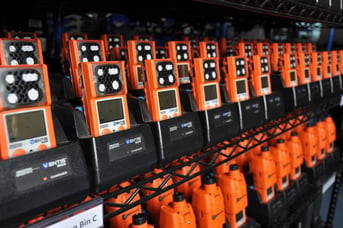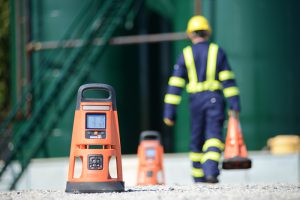What is Relay Control and Why Would I Need One in My Gas Detection Setup?
In short, control relays are an electrically operated switch, and are used when operators need to automatically control a circuit that’s connected to an independent, low-power signal. There are multiple types of relay controls – including SPST, SPDT, DPST, and DPDT.
Relay control setups have many different applications, but when it comes to gas detection in the upstream oil and gas industry, they’re critical in helping to improve safety protocols and taking setup times from days to hours.
When to Use Control Relays
Control relays are commonly used in a variety of industrial settings. In the upstream oil and gas industry, however, there are often multiple local area gas detection systems that incorporate local alarm locations to help facilitate both remote and local monitoring. They can also help to automatically trigger safety protocols, ensuring the entire site and its workers are protected.
On average, there are approximately 8 to 10 detection points per oil rig, which are placed in or around the area. These detection points are typically wired all the way to an on-site “safety shelter,” where safety personnel are monitoring the site for any disturbances. In a standard setup, these detection points, cables, and other safety procedures can take days to both set up and take down.
By incorporating a gas monitoring system that features relay control, you can improve both set up and take down times from days to hours. This is because gas monitoring devices like the Radius BZ1 Area Monitor, which can be moved and placed anywhere, and RGX Gateway featuring relay control setups communicate wirelessly. Without the need for additional cables, you can vastly reduce setup and takedown times to mere hours.

How are Control Relays Triggered?
In the upstream oil and gas industry, incorporating a relay control operation enables more flexible deployments of the Radius BZ1 Area Monitor, as well as additional safety protocols to be added to a user’s personal monitoring set up.
For example, if either a Radius BZ1 Area Monitor placed around the site or a user’s personal Ventis Pro5 Monitor go into alarm, the RGX Gateway will automatically be notified. With relay control (in this case, SPDT relay control), the RGX Gateway will send a signal out to the appropriate controls where, more often than not, the relay will switch from “off” to “on” to trigger other safety protocols.
Based on the set up at a site, the RGX Gateway relay control output can be configured into a “normally off” or “normally on” configuration to match the specific application and safety needs. This allows for equipment that is normally running to be switched off or equipment that is normally off to be turned on based on the presence of hazard gas.
Once a relay control operation is installed (in this case, SPDT relay control), users can opt to use it in a variety of ways. Typical examples include using its capabilities to power external equipment – including light bars, sirens, and ventilation – on or off based on specific device and sensor alarms. This helps users ensure the proper safety response is initiated based on the type of hazard present. The RGX Gateway relay control capability currently provides 8 channels to control multiple external devices through one setup point.
Interested in learning more about relay control? Find out if using a Radius BZ1 Area Monitor with the RGX Gateway's relay control capabilities are right for you by talking to an expert.



